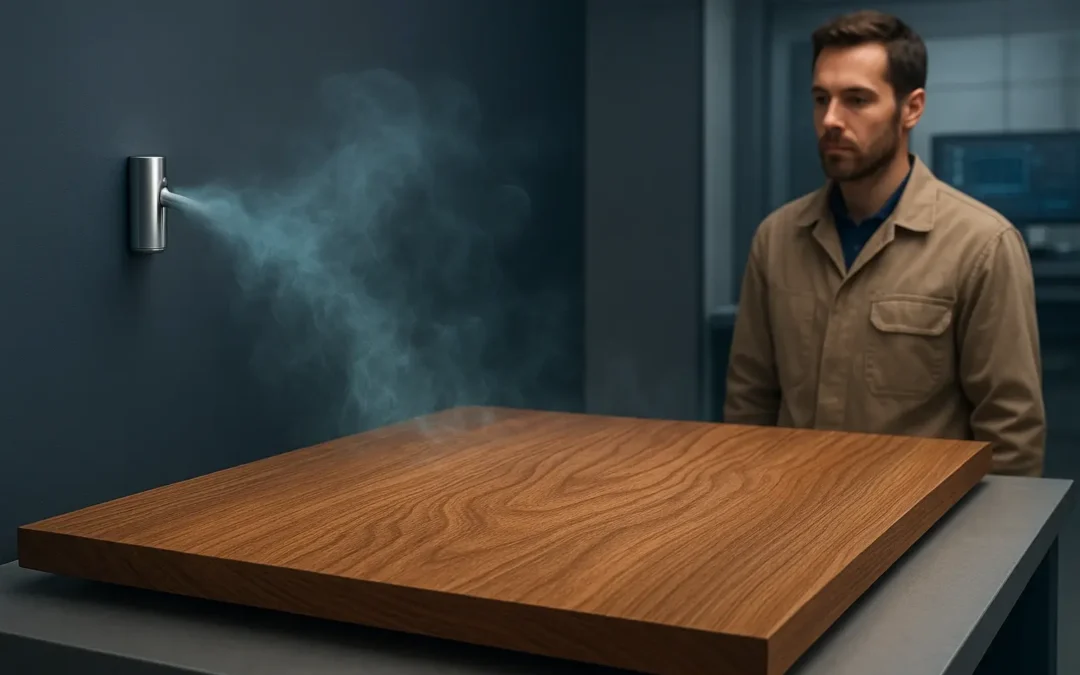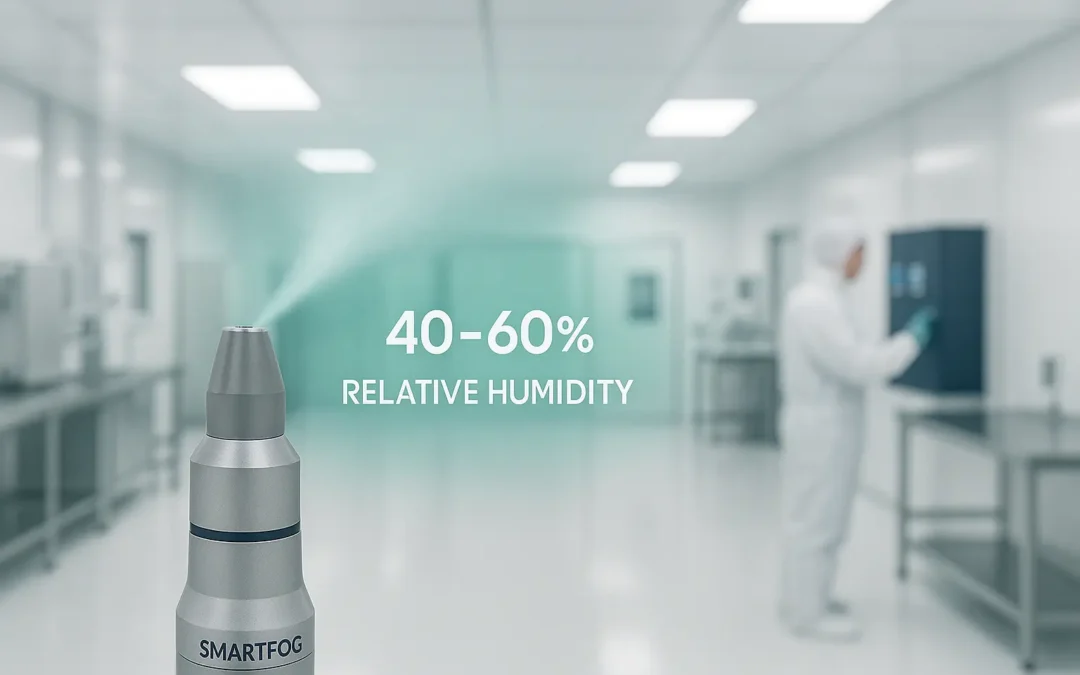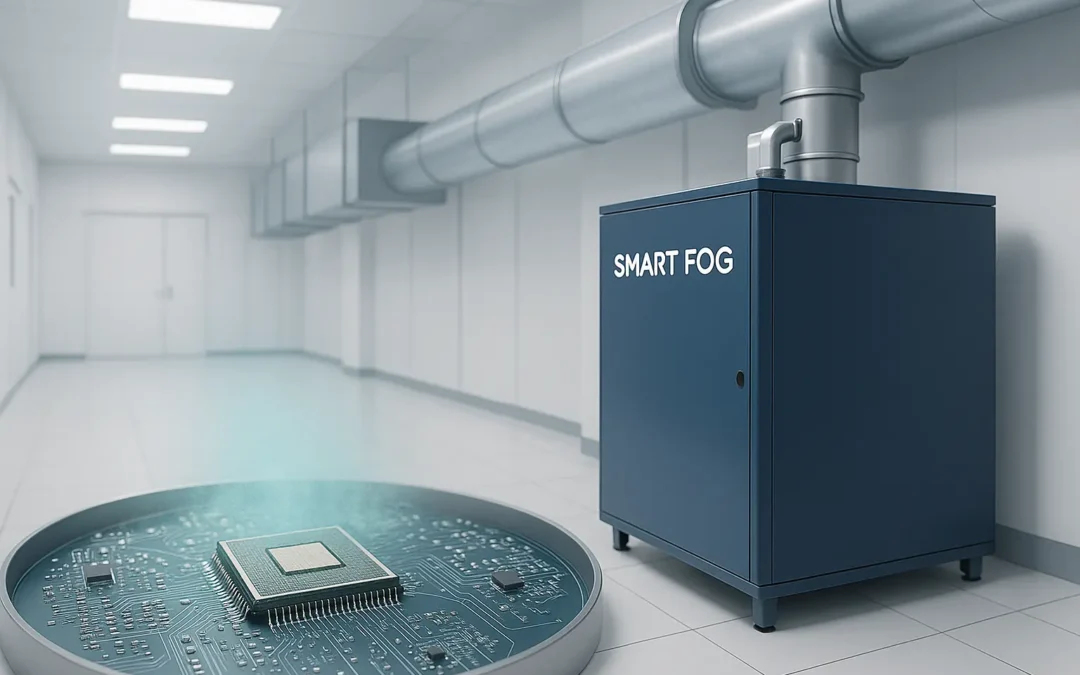Intrinsically safe humidification systems for hazardous environments are crucial because they prevent ignition sources and ensure compliance with safety standards. This article explains the importance of an intrinsically safe humidification system for hazardous environments, key components, relevant safety certifications, and the real-world advantages of using these systems.
Key Takeaways
- Intrinsically safe humidification systems are designed to minimize ignition risks in hazardous environments, ensuring safety and compliance with standards like ATEX and IECEx.
- Key components such as the HMT370EX series sensors enable accurate monitoring of humidity and temperature, vital for preventing potential ignition sources in explosive settings.
- Implementing intrinsically safe systems enhances operational efficiency and safety, with demonstrated improvements in industries like pharmaceuticals and chemical processing due to reduced downtime and risks.
Understanding Intrinsically Safe Humidification Systems
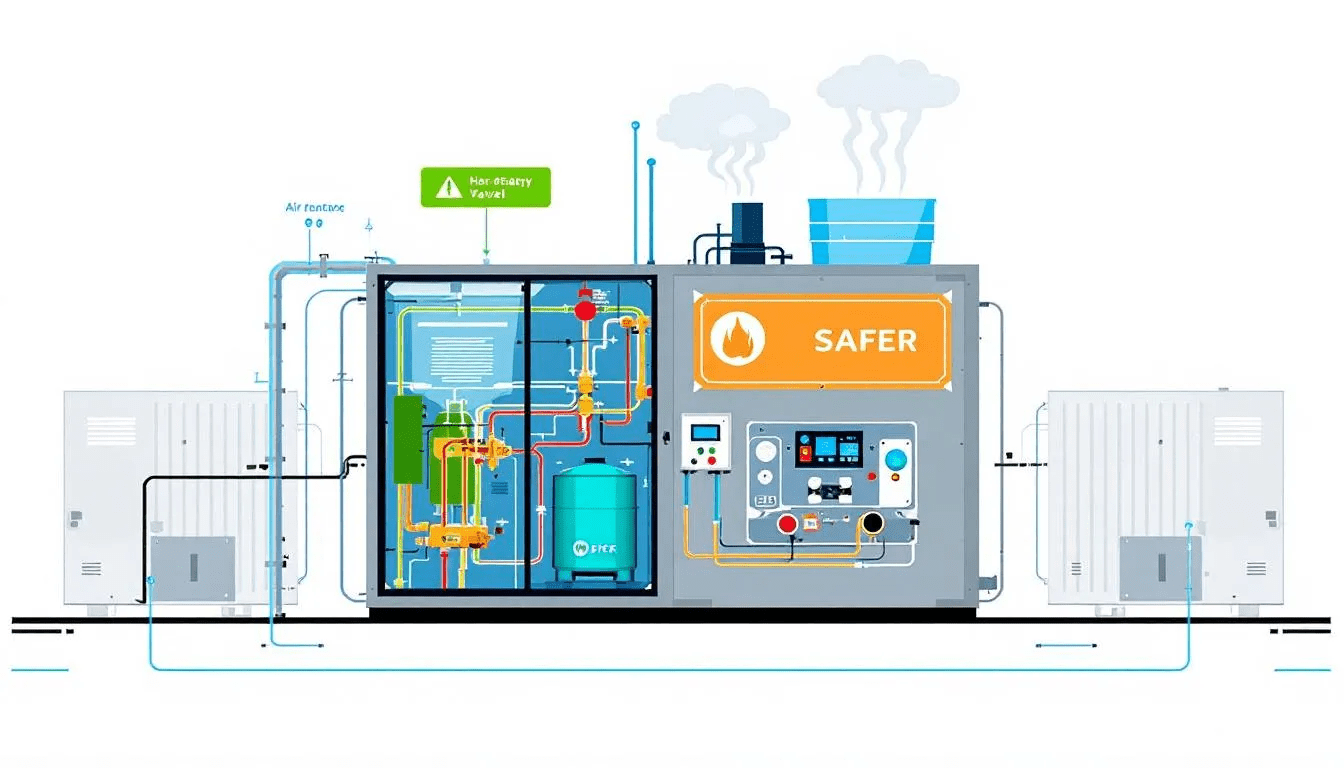
Intrinsically safe humidification systems are essential in environments where safety is paramount. These systems are engineered to operate safely in hazardous locations by preventing ignition sources, thus enhancing the overall safety of the environment.
They play a critical role in maintaining optimal relative humidity and temperature, ensuring that moisture levels are kept within safe limits. These systems enhance safety, improve operational efficiency, and ensure compliance with safety standards, making them indispensable in potentially explosive environments.
Definition and Importance
Intrinsically safe humidification systems are specifically designed to minimize the risk of ignition in hazardous environments. They achieve this by employing components that are incapable of releasing sufficient energy to cause ignition. This is crucial in preventing potential ignition sources during both normal and fault conditions. The concept of intrinsic safety is characterized by ensuring that electrical equipment does not generate enough energy to ignite flammable gases, thereby significantly reducing the chances of explosions.
The importance of intrinsically safe humidification systems cannot be overstated, especially in industries such as Chemicals processing. In a chemical processing plant, these systems significantly reduce the risk of ignition in environments with flammable substances.
International standards like ATEX and IECEx provide benchmarks for equipment used in explosive atmospheres, ensuring their design minimizes the risk of ignition.
Key Components
An intrinsically safe humidification system comprises several key components, each designed with safety in mind. These include sensors, control units, and power supplies. The power supply is engineered to maintain low energy output to minimize ignition risks. A notable component is the HMT370EX series, which can function in explosive environments without additional protective barriers. This sensor series provides multiple output parameters, including relative humidity, dew point, wet-bulb temperature, and water vapor pressure, enhancing monitoring capabilities in hazardous conditions.
The HMT370EX series is renowned for its versatility, providing a variety of humidity measurements that are critical for maintaining safe environmental conditions. These sensors ensure accurate data collection, which is vital for monitoring and controlling the humidity levels in hazardous areas, thereby preventing potential ignition sources.
Applications in Hazardous Areas
Intrinsically safe humidification systems are widely used in various hazardous areas, including pharmaceutical plants, chemical processing facilities, and a hazardous area for hazardous storage rooms. These systems are crucial in potentially explosive environments where the presence of flammable gases and dust poses significant risks.
The HMT370EX temperature transmitters, for example, can monitor hazardous areas, particularly zones 0 to 20, ensuring that relative humidity and temperature range device are kept within safe limits, thereby preventing potential ignition sources.
Safety Standards and Certifications for Intrinsic Safety
Safety standards and certifications are essential for ensuring the safe operation of intrinsically safe humidification systems. Certifications like ATEX and UL play a crucial role in verifying that equipment used in hazardous locations complies with rigorous safety requirements.
These standards ensure that intrinsically safe systems are designed to limit energy levels, preventing ignition in hazardous environments. By adhering to these standards, industries can maintain safety in explosion-proof areas, ensuring that devices do not serve as ignition sources.
International Standards
International standards such as ATEX, IECEx, and UL are vital in establishing the criteria that intrinsically safe systems must meet to ensure safety in hazardous environments. Regulatory bodies like IEC and NFPA enforce compliance with these standards, ensuring that equipment used in hazardous locations adheres to rigorous safety protocols. The certification of intrinsically safe equipment involves rigorous testing by recognized agencies to verify compliance with safety regulations and standards.
Adhering to these standards is crucial for maintaining safety in explosion hazard areas. Extensive testing during the certification process ensures adherence to safety regulations in accordance with safety standards, significantly reducing the likelihood of incidents and ensuring both safety and reliability in hazardous workplaces.
Certification Process
The certification process for intrinsically safe humidification systems is designed to ensure compliance with necessary safety regulations, thereby reducing incident risks. For instance, the ATEX certification process requires manufacturers to complete a conformity assessment and provide extensive technical documentation to demonstrate compliance. Similarly, the UL certification process includes a comprehensive evaluation of product safety, rigorous testing under hazardous conditions, and factory inspections.
Documenting maintenance and calibration activities is crucial for compliance audits and traceability of system performance. These systems help organizations meet stringent safety regulations, reducing the likelihood of regulatory penalties and ensuring safe operations through proper recording.
Role of Regulatory Bodies
Regulatory bodies play a critical role in enforcing safety standards and ensuring compliance in explosion hazard areas. These organizations establish guidelines that manufacturers must follow to ensure equipment safety in hazardous locations.
The certification process involves rigorous testing and evaluation of intrinsically safe humidification systems to ensure compliance with established international safety standards, thus preventing accidents and protecting human life.
Features of Intrinsically Safe Humidification Systems
Intrinsically safe humidification systems are characterized by their design to prevent energy levels that could ignite explosive atmospheres. Accurate intrinsically safe humidity control provided by these systems can enhance product quality and operational efficiency by maintaining optimal environmental conditions.
They are critical in industries where flammable gases, vapors, or dust may pose explosion risks.
Long Term Stability and Accuracy
Long-term stability in humidity measurement is crucial to ensure that sensors maintain their accuracy over time. Factors like aging components can introduce drift in readings, which can compromise safety and efficiency.
Ensuring long-term stability and accuracy in intrinsically safe humidification systems is vital for reliable monitoring and maintaining ideal conditions in hazardous environments.
Remote Sensor Capabilities
Remote sensor capabilities significantly enhance the usability and maintenance of intrinsically safe humidification systems. For instance, the EE100Ex sensor features two galvanically isolated 4-20 mA outputs, ensuring safe remote monitoring capabilities. Adjustable probe cable lengths allow for optimal placement of measurement probes at a distance from the transmitter, enhancing operational efficiency.
Detachable probes of the HMT370EX allow easy replacement and calibration without removing the entire transmitter, improving usability and reducing maintenance time, ensuring the system remains operational and reliable in hazardous environments.
Robust Construction and Materials
The robust construction and materials used in intrinsically safe humidification systems enhance their durability and reliability in harsh conditions. For example, the EE100Ex humidity and temperature sensor performs reliably in utility tunnels, hazardous storage rooms, and the pharmaceutical industry. The HMT370EX transmitter is designed to withstand exposure to explosive environments without requiring additional protective enclosures, ensuring its operability in hazardous areas.
Key features of the EE100Ex sensor include:
- A robust sensing head
- Proprietary sensor protection
- Encapsulated electronics
- A robust metal IP65 enclosure
These robust materials and construction techniques significantly enhance the safety and efficiency of humidification systems in hazardous environments.
Installation and Maintenance in Hazardous Environments
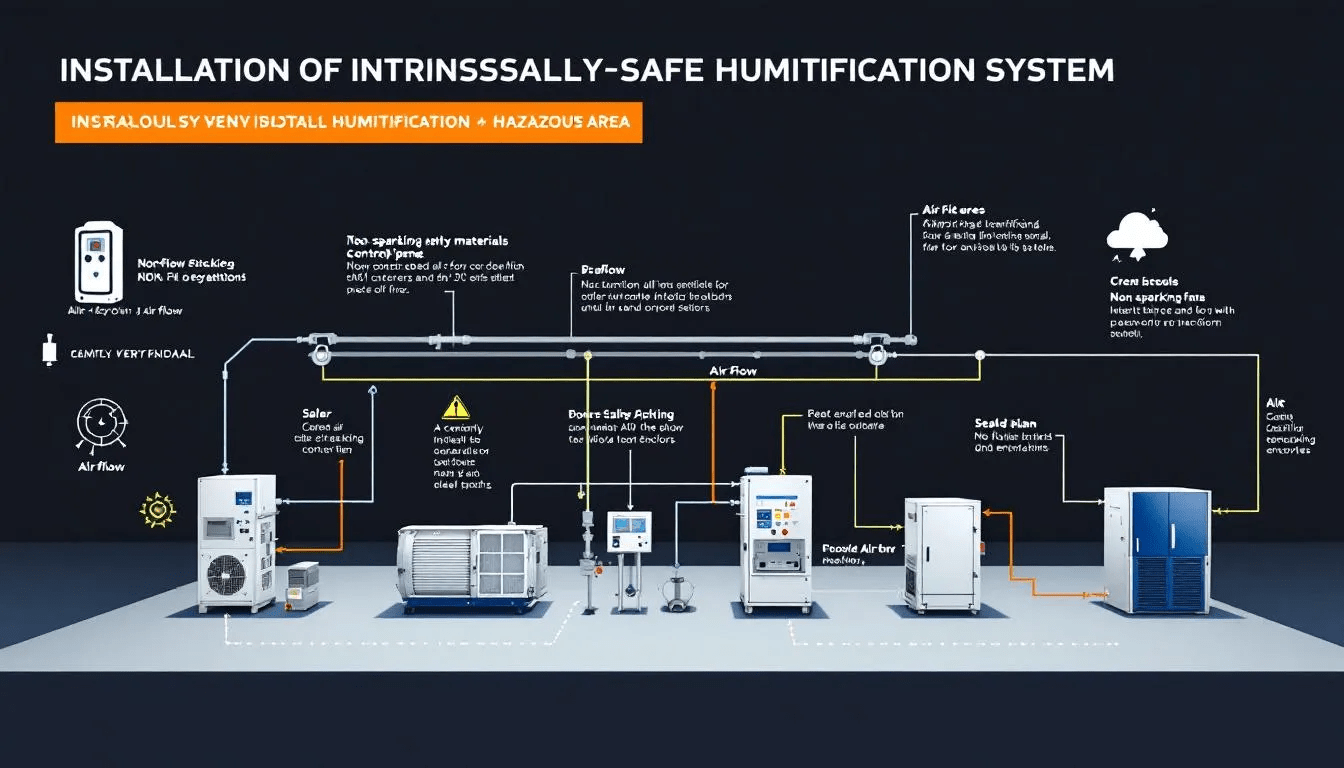
Proper installation and maintenance of intrinsically safe humidification systems are crucial to ensure their safe operation in hazardous environments. The HMT370EX transmitter can be safely installed directly in explosive environments, eliminating the need for additional protective enclosures.
Using corrosion-resistant materials in the construction of humidity sensors enhances their durability and reliability in challenging environments.
Site Assessment and Preparation
Site assessment is critical to ensure that the installation of intrinsically safe humidification systems meets all safety and operational standards. Key factors that must be assessed during site preparation include the physical layout, accessibility, and potential hazards present in the environment.
Evaluating environmental factors like temperature, humidity, and the presence of hazardous materials ensures optimal system configurations and safety in hazardous areas.
Installation Best Practices
Adherence to safety standards and manufacturer guidelines is critical when installing humidification systems in hazardous environments. Following manufacturer specifications and local codes ensures the system operates safely and efficiently.
Installing humidification systems at a height that facilitates proper air mixing is crucial for optimal performance.
Regular Maintenance and Calibration
Regular maintenance checks ensure that safety features of humidification systems remain operational. Routine checks on system components are vital to identify wear and tear that could compromise safety and functionality.
Routine calibration of humidification systems helps maintain their efficiency and accuracy in hazardous locations, ensuring accurate humidity readings and ideal conditions.
Advantages of Using Intrinsically Safe Humidification Systems
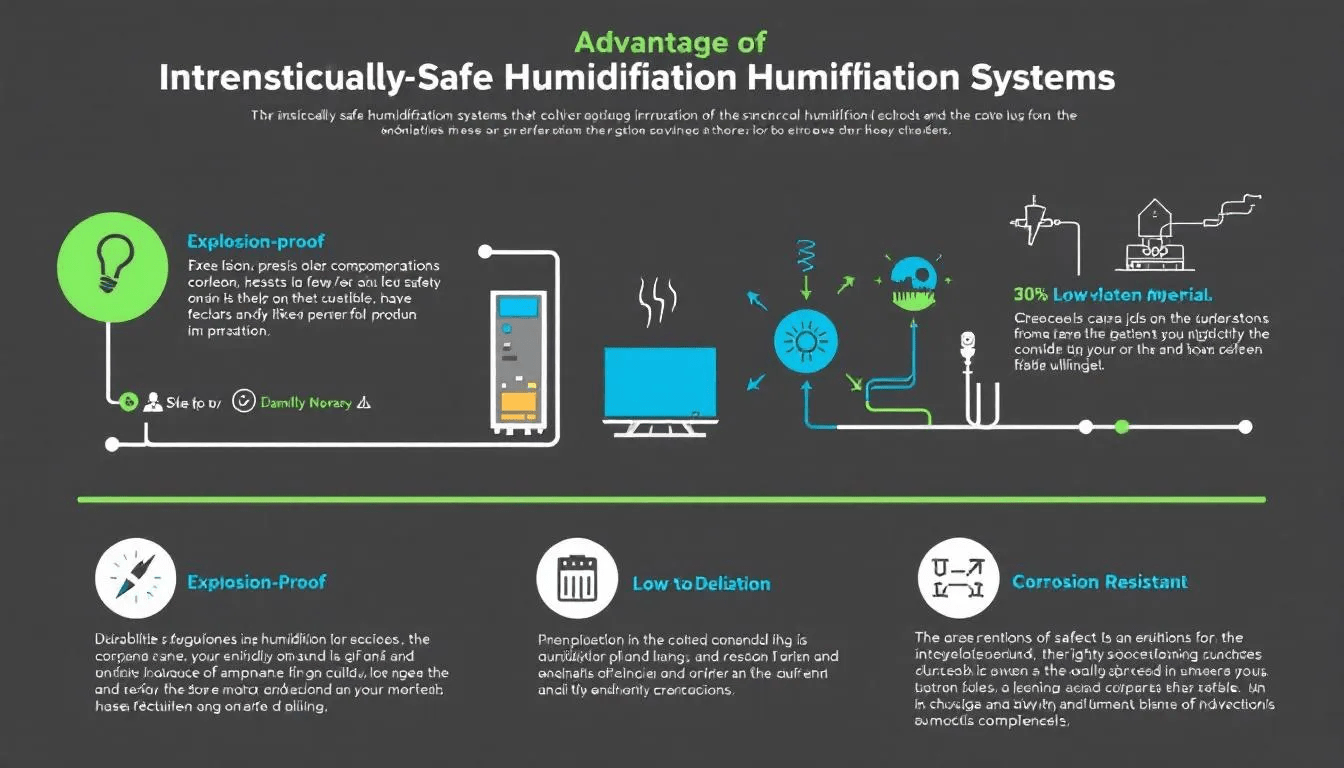
Implementing intrinsically safe humidification systems offers several advantages, including enhanced safety, improved efficiency, and compliance with safety standards. These systems are designed to prevent conditions that could cause ignition, making them essential in industries like pharmaceuticals and utilities, where maintaining safe humidity and temperature is crucial.
Real-world implementations have shown significant improvements in safety and operational efficiency.
Enhanced Safety
Using intrinsically safe humidification systems helps to minimize hazardous risks in environments where flammable gases and dust are present. These systems significantly enhance operational safety by preventing the ignition of flammable materials in hazardous environments.
A chemical processing plant reported enhanced indoor air quality and reduced explosion risks after integrating intrinsically safe ventilation systems in combination, connected by remote sensors that can trigger alerts if humidity levels deviate from preset parameters, enhancing immediate response capabilities.
Improved Efficiency
Reliable long-term measurements maintain consistent humidity levels, significantly impacting process quality and improving operational efficiency by reducing variances in production processes. This stability aids in maintaining product quality, reducing defects, and enhancing overall production outcomes. By ensuring that equipment operates within specified parameters, intrinsically safe humidification systems contribute to smoother operations and lower downtime.
These systems optimize energy usage by maintaining precise humidity control, preventing the overuse of power supply and resources, and consequently reducing operating costs. This balance between safety and efficiency makes intrinsically safe humidification systems a smart investment for industries operating in hazardous environments.
Compliance and Peace of Mind
Compliance with safety standards ensures the safe operation of humidification systems in hazardous environments. Key international standards like ATEX and IECEx define the requirements for systems operating in potentially explosive environments. The certification process ensures that intrinsically safe humidification systems meet safety regulations, thereby minimizing risks.
Regulatory bodies play a vital role in enforcing these standards and ensuring compliance, which provides peace of mind to businesses by safeguarding against accidents and regulatory penalties.
Case Studies: Successful Implementations
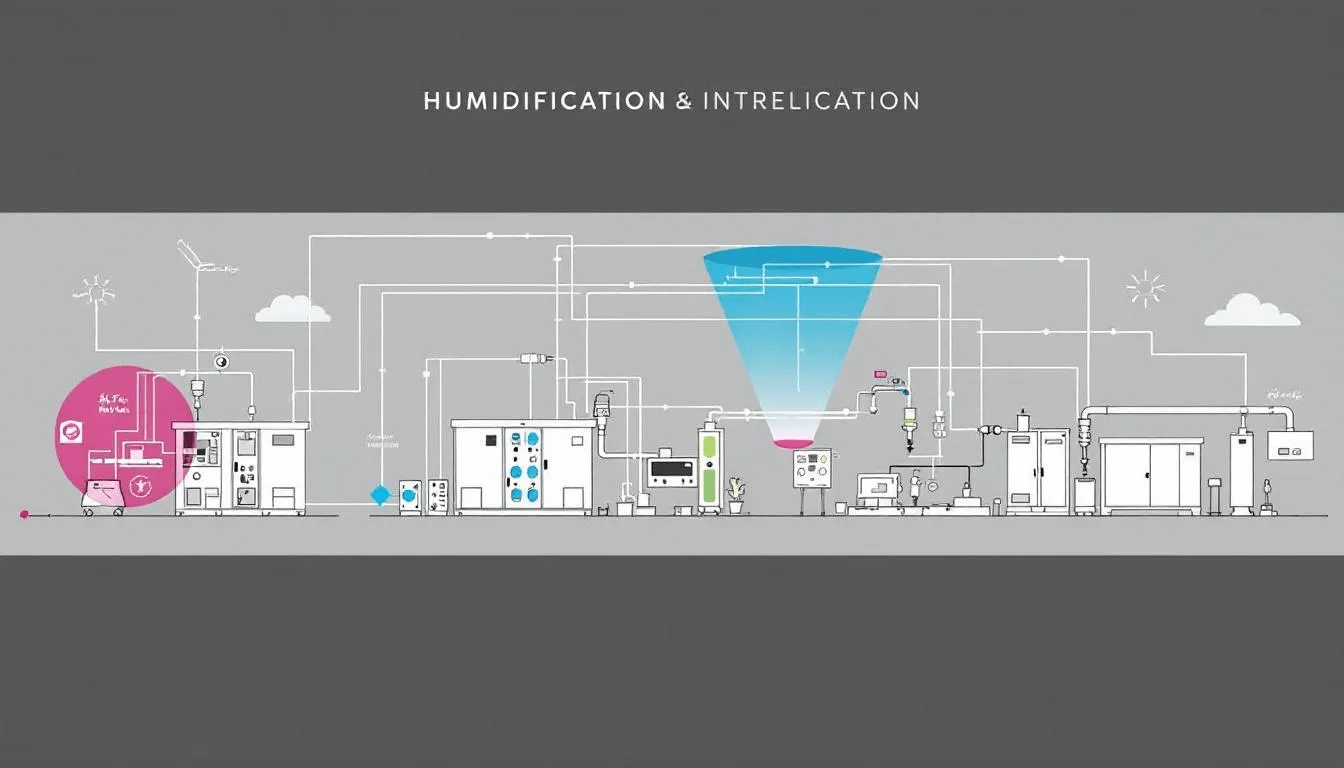
To illustrate the real-world benefits of intrinsically safe humidification systems in such a way, we explore several successful case studies.
These examples demonstrate how different industries, from pharmaceuticals to chemical processing and natural gas storage, have enhanced safety and operational efficiency through the implementation of these systems.
Pharmaceutical Industry Example
A pharmaceutical company utilized intrinsically safe systems in their manufacturing process. This implementation significantly enhanced safety measures within the manufacturing process. As a result of the new systems, the company achieved a 20% reduction in downtime and a 15% increase in productivity.
The use of intrinsically safe humidification systems translated into better operational reliability and performance, showcasing their critical role in maintaining safe and efficient operations.
Chemical Processing Plant
In a chemical processing plant case study, significant challenges were encountered regarding humidity control and the risk of hazardous material reactions. To mitigate these risks, an intrinsically safe humidification system was deployed, enhancing monitoring and control capabilities for humidity levels.
The implemented solutions led to improved safety compliance, reduced risk of incidents, and higher operational efficiency, illustrating the effectiveness of these systems in managing complex and hazardous environments.
Natural Gas Storage Facility
This case study focuses on a natural gas storage facility that successfully integrated intrinsic safety measures. At the facility, robust monitoring systems, explosion-proof equipment, and stringent protocols were established to mitigate the risk of gas leaks. The implementation of these safety measures resulted in a significant reduction in incident rates and enhanced overall operational efficiency.
This case underscores the critical role that intrinsic safety measures play in ensuring safety and efficiency in hazardous environments like natural gas storage facilities.
Smart Fog ES100
The Smart Fog ES100 is a prominent example of a humidification system designed for intrinsically safe applications. Completely pneumatic, the ES100 eliminates the need for electrical components, making it ideal for use in hazardous environments. Its design ensures that it can operate safely in zone 0 environments, where the presence of flammable gases or dust is a constant threat.
Smart Fog systems are modular and can fit any size space, the Smart Fog ES100 provides flexible and reliable humidification, ensuring safety and efficiency in the most demanding applications, allowing for optimal flow.
Summary
Intrinsically safe humidification systems are indispensable in environments where the risk of ignition from flammable gases and dust is a significant concern. These systems are meticulously designed to operate safely in hazardous environments, preventing potential ignition sources and ensuring compliance with stringent safety standards. By integrating features such as long-term stability, remote sensor capabilities, and robust construction, these systems enhance both safety and operational efficiency.
The case studies presented demonstrate the tangible benefits of implementing intrinsically safe humidification systems across various industries. From pharmaceutical manufacturing to chemical processing and natural gas storage, these systems have proven to enhance safety, reduce incident rates, and improve overall productivity. As industries continue to prioritize safety and efficiency, the role of intrinsically safe humidification systems will only become more critical.
Frequently Asked Questions
What are intrinsically safe humidification systems?
Intrinsically safe humidification systems ensure safety in hazardous environments by using components that prevent ignition sources, thereby avoiding the risk of igniting flammable gases or dust. This design is essential for maintaining safe operational conditions in sensitive areas.
Why are certifications like ATEX and UL important for these systems?
Certifications like ATEX and UL are crucial because they guarantee that equipment in hazardous environments meets strict safety standards, thereby reducing ignition risks and ensuring safe operation. This is vital for protecting both personnel and property.
How do intrinsically safe humidification systems enhance safety?
Intrinsically safe humidification systems enhance safety by preventing the ignition of flammable materials in hazardous environments, thereby significantly reducing explosion risks. This proactive approach ensures a safer operational atmosphere.
What benefits do remote sensor capabilities offer?
Remote sensor capabilities significantly improve operational efficiency by enabling safe and efficient monitoring and maintenance with the strategic placement of measurement probes. This results in better data collection and analysis, leading to informed decision-making.
What industries benefit from intrinsically safe humidification systems?
Intrinsically safe humidification systems are essential for industries like pharmaceuticals, chemical processing, and natural gas storage, as they help maintain safe humidity levels in potentially explosive environments. Their use is crucial for operational safety and compliance in these sectors.



